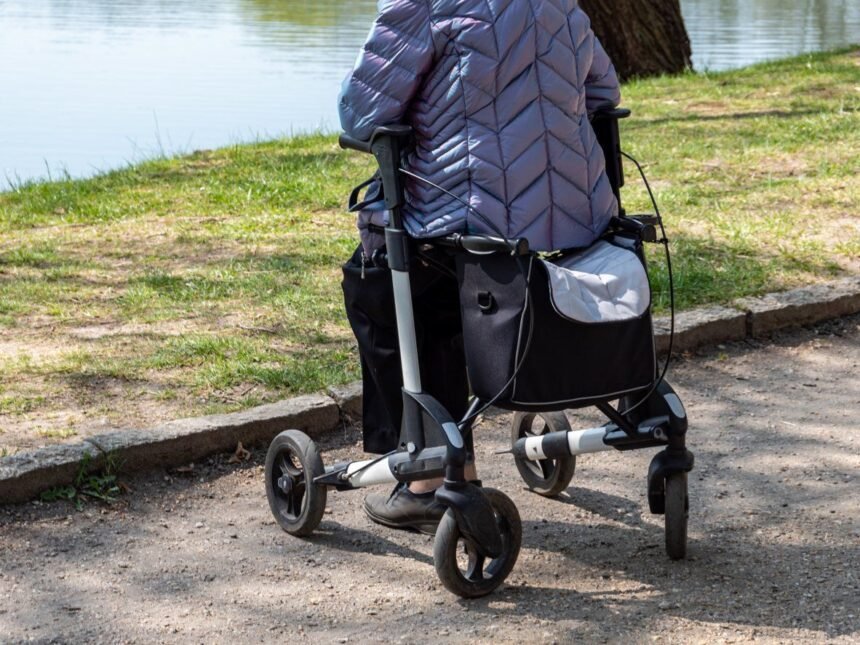Mobility challenges can feel overwhelming, but with the right support equipment, independence and comfort are still within reach. A rollator walker, with its sturdy frame, hand brakes, and built-in seat, offers far more than mobility—it provides confidence and peace of mind. However, to get the most out of a rollator, proper care and safe usage are essential. Knowing how to use, maintain, and adjust your walker can make a world of difference in daily comfort and long-term mobility.
Understanding Your Rollator Walker
Before exploring specific care tips, it’s essential to have a clear understanding of your rollator. Unlike traditional walkers, rollators come equipped with wheels—usually three or four—that make movement smoother and require less effort. Many models also feature a padded seat, storage basket, and ergonomic handles. Together, these features make rollators a great choice for people who prioritize ease of movement and everyday comfort. The right rollator walker can transform daily life, but it requires responsibility in handling and upkeep.
Proper Adjustment for Comfort and Safety
One of the most overlooked steps in using a rollator is ensuring it is properly adjusted to your body. If the handles are too high, your arms will strain. If too low, your back may hunch, causing discomfort over time. A good rule of thumb is to adjust the handles so that your elbows bend slightly—around 15 degrees—when you grip them. This small detail helps improve posture and reduce joint pain.
Additionally, the brakes should always be within easy reach and tested before use. Never attempt to walk with a rollator until you are confident the height, brakes, and wheels are correctly adjusted to your comfort and safety needs.
Safe Walking Practices with a Rollator
Learning how to walk with a rollator correctly is vital. Always push the walker in front of you and keep your body centered between the handles. Avoid leaning too heavily on the rollator, as it is designed for balance support, not as a substitute for full body weight.
When sitting down, lock the brakes first, then carefully turn and lower yourself onto the seat. Similarly, when standing up, engage the brakes, rise slowly, and only then begin moving. Many accidents occur when users forget to lock the brakes, so making this a habit ensures safety every time.
Regular Cleaning and Maintenance
A rollator walker is used daily, indoors and outdoors, so dirt, dust, and wear are inevitable. Regular cleaning not only keeps it looking fresh but also ensures it functions properly. Wipe down the frame with a damp cloth weekly, paying close attention to wheels and brakes where dirt often collects.
Inspect the wheels for dirt, tangled hair, or small objects that may interfere with smooth rolling. If the wheels squeak, a small amount of lubricant can restore easy rolling. For fabric seats or baskets, follow the care instructions, usually requiring mild soap and water for cleaning.
Most importantly, inspect the brakes regularly. If they feel loose or unresponsive, adjust them immediately or take the rollator to a professional for service. Having dependable brakes is key to ensuring the safe use of a rollator.
Storing Your Rollator Properly
When not in use, storing your rollator in a safe place prevents unnecessary wear and accidents. Keep it indoors whenever possible to protect it from weather damage. Rain, snow, or excessive humidity can cause rust and weaken the frame over time.
If space is an issue, most rollators are foldable, making them easy to tuck away in closets or next to furniture. When transporting in a car, always fold it carefully and secure it to prevent damage during travel.
Incorporating a Rollator into Your Lifestyle
Beyond care and safety, a rollator can be part of an active and fulfilling lifestyle. Use it not only as a mobility aid but also as a companion on walks, trips to the store, or even social gatherings. The built-in seat allows for rest breaks during long outings, while the basket provides convenience for carrying personal items or groceries.
For people living with disabilities or recovering from surgery, the rollator walker represents freedom. It reduces reliance on caregivers, encourages physical activity, and builds confidence in moving independently. Proper use ensures that this freedom comes without risk of injury.
Listening to Your Body
Perhaps the most important aspect of using a rollator is self-awareness. Be mindful of the signals your body gives while using the rollator. If you notice pain, fatigue, or discomfort, it may be a sign that the walker needs adjustment or that you are overexerting yourself. Never push beyond your limits. The rollator is there to support, not replace, safe mobility practices.
Conclusion
A rollator walker goes beyond being a simple device—it serves as a path to greater independence and comfort for people facing mobility difficulties. By adjusting it properly, practicing safe walking techniques, cleaning it regularly, and storing it with care, you ensure both safety and long-lasting performance. When incorporated thoughtfully into your lifestyle, a rollator provides not only practical help but also the confidence to enjoy life on your own terms.







